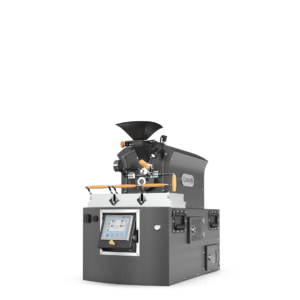The coffee roasting industry includes the handling of green coffee o beans into simmered coffee o items, including entire and ground beans and dissolvable coffee o items. The Standard Industrial Classification (SIC) code for coffee roastings 2095. Coffee Roasters Glasgow makes the taste too good.
Description of the process

The coffee roasting process comprises cleaning, simmering, cooling, crushing, and bundling tasks. Packs of green coffee o beans are hand-or machine-opened, unloaded into a container, and screened to eliminate garbage. The green beans are then gauged and moved by belt or pneumatic transport to capacity containers. From the capacity containers, the green beans are passed on to the roaster. Roasters normally work at temperatures somewhere in the range of 370° and 540°C (698° and 1004°F), and the beans are simmered for a while going from a couple of moments to around 30 minutes. Roasters are commonly flat turning drums that tumble the green coffee o beans in a current of hot burning gases; the roasters work in one or the other bunch or ceaseless modes and can be roundabout or direct-terminated. Roundabout terminated roasters will be roasters in which the burner fire doesn’t contact the coffee o beans, albeit the ignition gases from the burner truly do contact the beans. Direct-terminated roasters contact the beans with the burner fire and the ignition gases. Toward the finish of the simmering cycle, water splashes are utilized to “extinguish” the beans. Following simmering, the beans are cooled and gone through a “destoner”. Destoners are air classifiers that eliminate stones, metal sections, and other waste not eliminated during starting screening from the beans. The designers pneumatically pass on the beans to a container, where the beans are settled and dry (limited quantities of water from extinguishing exist on the surface of the beans). This adjustment cycle is called equilibration. Following equilibration, the cooked beans are ground, normally by multi-stage processors. A few broiled beans are bundled and delivered as entire beans. At last, the ground coffee o is vacuum fixed and transported.
Additional operations
Extra tasks related to handling green coffee o beans incorporate decaffeination and moment (dissolvable) coffee o creation. Decaffeination is the method involved with removing caffeine from green coffee o beans before cooking. The most well-known decaffeination process utilized in the United States is supercritical carbon dioxide (CO2) extraction. In this interaction, dampened green coffee o beans are reached with enormous amounts of supercritical CO2 (CO2 kept up with at a tension of about 4,000 pounds for every square inch and temperatures somewhere in the range of 90° and 100°C [194° and 212°F]), which eliminates around 97% of the caffeine from the beans. The caffeine is then recuperated from the CO2, normally utilizing an actuated carbon adsorption framework. Another ordinarily utilized technique is dissolvable extraction, normally utilizing oil (separated from simmered coffee o) or ethyl acetic acid derivation as a dissolvable. In this cycle, dissolvable is added to saturated green coffee o beans to extricate the greater part of the caffeine from the beans. After the beans are eliminated from the dissolvable, they are steam-stripped to eliminate any leftover dissolvable. The caffeine is then recuperated from the dissolvable, and the dissolvable is re-utilized. Water extraction is additionally utilized for decaffeination, yet little data on this interaction is accessible. Decaffeinated coffee o beans have a lingering caffeine content of around 0.1 percent on a dry premise. Not all offices have decaffeination tasks, and decaffeinated green coffee o beans are bought by numerous offices that produce decaffeinated coffee.
